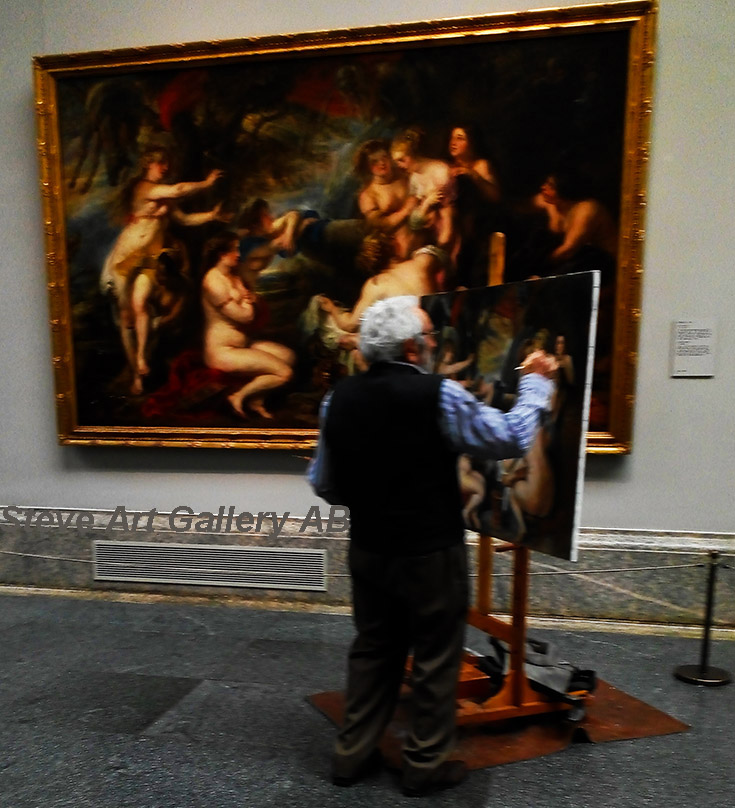|
Here are other RAFFAELLO Sanzio's oil paintings.
|
|
|
|
|
All RAFFAELLO Sanzio's Paintings.
|
|
Oil Painting ID: 63781
|
|
Madonna dell'Impannata
|
|
1513-14 Oil on wood, 158 x 125 cm Galleria Palatina (Palazzo Pitti), Florence In the mid-1510s Raphael had passed from the highly synthetic and expressive compositions of the first years of the decade to representations which were more and more complex and even more dispersive. Most of these were also finished by his pupils, for this was the busiest moment in Raphael's career. The Madonna dell'Impannata in the Pitti Gallery in Florence was also painted with the help of assistants. According to some critics, the assistants executed the entire painting. But others see the master's hand at least in the major figures (some say in the Christ Child, some in St Elizabeth, some in both figures). The composition is innovative in respect to the usual iconography of the holy family. It shows St Catherine, St Elizabeth, Christ, the Virgin and St John gathered together in a group. A large tent is visible in the background and a window covered by linen (the impannata, or cloth covering of a window, which gives the painting its name) can be seen at the extreme right. Like many other works by Raphael, this painting was carried off by the French in 1799 and was not returned until after the Congress of Vienna, in 1815.Artist:RAFFAELLO Sanzio Title: Madonna dell'Impannata Painted in 1501-1550 , Italian - - painting : religious
Order special size.
Paintings We Have Painted!
|
|
|
|
|

|
|
Would you like old masters work for you? Click Here!
|
|
RAFFAELLO Sanzio:. Madonna dell'Impannata
Would you like old masters work for you? Click Here!
|
|
|

|
|
RAFFAELLO Sanzio:
Italian High Renaissance Painter, 1483-1520
Italian painter and architect. As a member of Perugino's workshop, he established his mastery by 17 and began receiving important commissions. In 1504 he moved to Florence, where he executed many of his famous Madonnas; his unity of composition and suppression of inessentials is evident in The Madonna of the Goldfinch (c. 1506). Though influenced by Leonardo da Vinci's chiaroscuro and sfumato, his figure types were his own creation, with round, gentle faces that reveal human sentiments raised to a sublime serenity. In 1508 he was summoned to Rome to decorate a suite of papal chambers in the Vatican. The frescoes in the Stanza della Segnatura are probably his greatest work; the most famous, The School of Athens (1510 C 11), is a complex and magnificently ordered allegory of secular knowledge showing Greek philosophers in an architectural setting. The Madonnas he painted in Rome show him turning away from his earlier work's serenity to emphasize movement and grandeur, partly under Michelangelo's High Renaissance influence. The Sistine Madonna (1513) shows the richness of colour and new boldness of compositional invention typical of his Roman period. He became the most important portraitist in Rome, designed 10 large tapestries to hang in the Sistine Chapel, designed a church and a chapel, assumed the direction of work on St. Peter's Basilica at the death of Donato Bramante,
|
|
|
Can't find your painting on our website?

|
|

|
|
|
|
Visit Gallery In USA


|
|
|